The Icelandic greenhouse restaurant where everything on the menu is made from tomatoes
When you think of Iceland, you tend to think of glaciers, geysers, volcanoes, earthquakes and dramatic landscapes. Rarely do people think of tomatoes. However, when you stop to think about the country’s never-ending supply of geothermal energy, it’s easy to see the potential. As greenhouse growing continues to expand, taking advantage of the country’s natural resources, so too does production. And whilst the country’s production is minuscule compared with that of large producers such as China and India, 2020 alone saw an increase of over 280% in Iceland’s exports of tomatoes. What’s more, 40% of Iceland’s tomatoes come from just one place – Friðheimar, situated 1 hour east of Reykjavik, where there is also a tomato-themed restaurant inside one of the site’s large greenhouses.
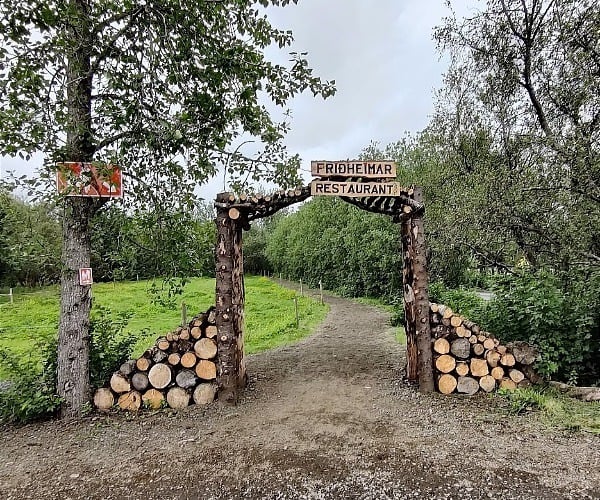
Greenhouse growing has been practiced at Friðheimar since 1946 and the current owners – horticulturist Helena Hermundardóttir and agronomist Knútur Rafn Ármann – have lived there with their children, who are also active participants in the business, since 1995.
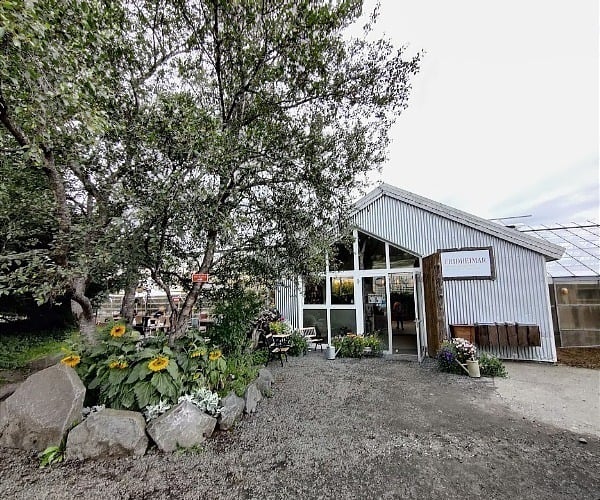
So popular is the Friðheimar experience that it’s strongly advisable to book ahead. Note that they’ll keep your reservation for 15 minutes if you are running late but, if it’s any longer, you must call and advise them of any delay if you want to keep your table. Of course, it’s only fair to notify them, but demand is high so be sure to afford this family business this basic courtesy if you don’t wish to lose your table! We had come straight from our Arctic Rafting adventure, located less than a 15-minute drive away, so judging the right time was not too difficult. If travelling from Reykjavik, I would allow an hour and a half, just to be sure.
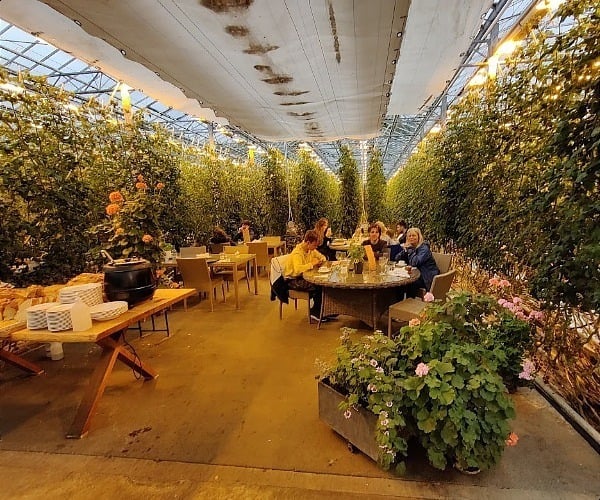
Having been shown to our table situated in an open area within a huge greenhouse, with aisle after aisle of tomato plants nearby, we were greeted by Sonia who gave us a really informative introduction to Friðheimar. We learnt about how Iceland’s many rich natural resources combine to provide optimum conditions for tomato growing. A borehole located just 200 metres away provides the perfect geothermal heating system, providing hundreds of thousands of tons of hot water each year, at a temperature of 95 degrees Centigrade, thus helping to provide the optimum temperature conditions for fruit production.
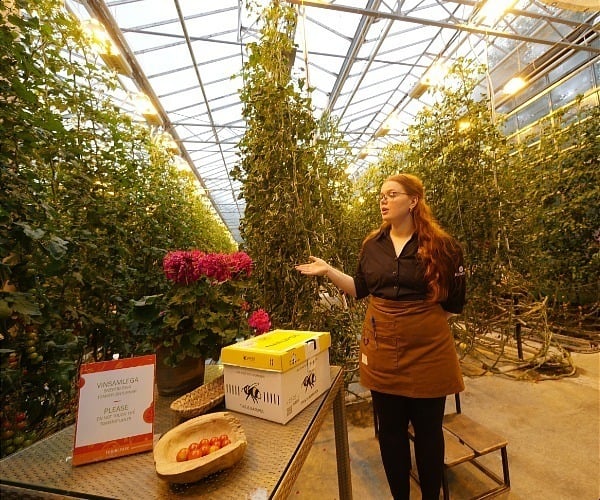
Iceland’s abundant ‘green electricity’ generated by hydro-electric and geothermal power stations provides the energy for Friðheimar’s high power sodium lamps which run for 14 hours per day in the Summer, and for at least 17 hours per day in the Winter. There are also carbon dioxide tanks to give everything a little boost, with CO2 levels in each greenhouse around double the levels you might normally expect.
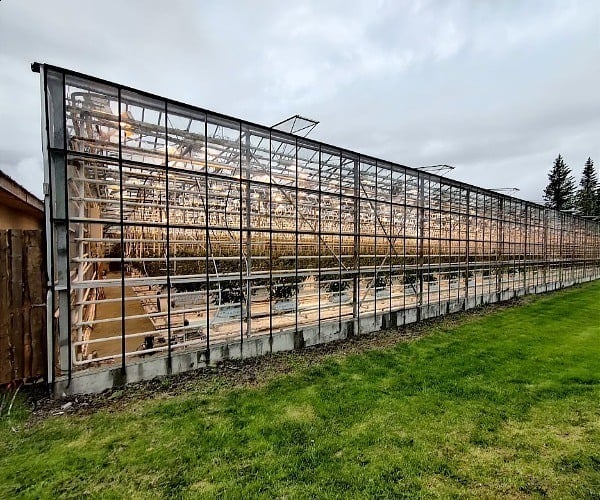
When it comes to taste, the most important factor is water quality. The plants are watered with the same water that Icelanders drink – the quality is important because tomatoes are about 90-92% water. and so better water means better-tasting tomatoes.
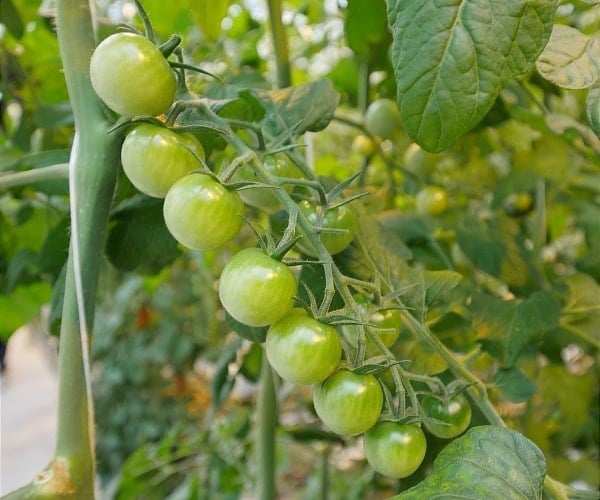
Friðheimar does not use any pesticides because in Iceland there aren’t a lot of bugs or flies. Instead, they use a biological pest control system where ‘good flies’ come from the Netherlands (Macrolophus callignosus) eat the eggs of the native ‘bad flies’, thus giving a good balance between those flies – it’s quite a simple system but a very effective one.
We learnt that Friðheimar is also very close to the markets so in the morning, workers try to pick the reddest tomatoes off the plants, and the packagers will usually send them on the same day. Friðheimar branding is used on the packaging, as well as the Icelandic flag colours so that you know its local, and the owners Knútur and Helena have gone one step further and included pictures of themselves, as well as further information to bring the business closer to the customer.
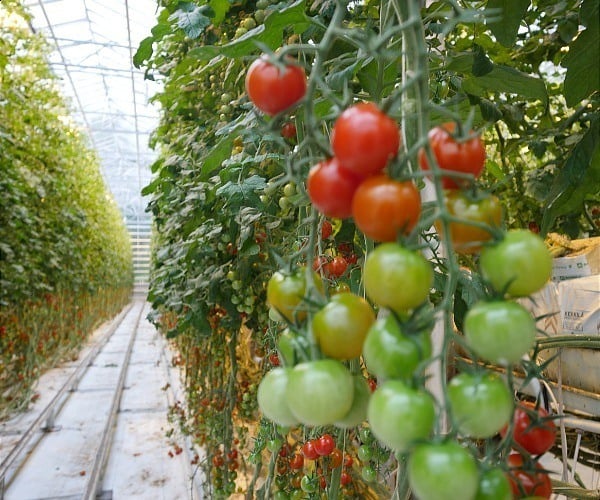
The plants – there are 27,000 plants across 9 greenhouses – grow to about 9 months old and 9 metres long and, after those 9 months, they are sent away to local farmers to compost. It’s good for Friðheimar to dispose of them, but also good for the farmers to get the compost.
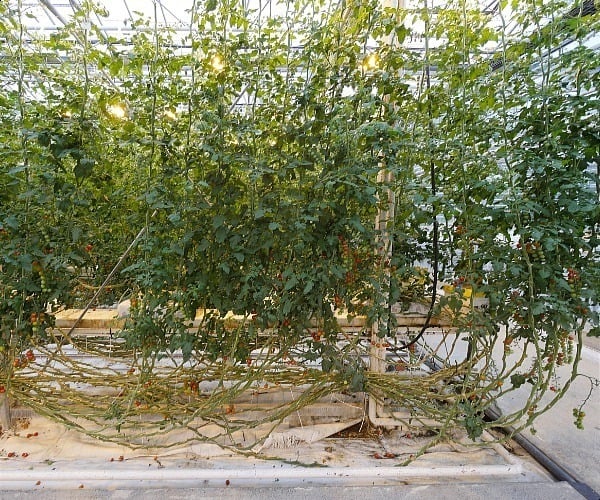
Everything starts in the nursery where the plants are grown from seed there for about 6 weeks. After those 6 weeks, they are put in the main greenhouse where they grow at a rate of about 25-30 centimetres per week (quite fast!). The plants are twisted and lowered every single week, and the lowest three branches are removed – if they are left, those branches take all the energy away that needs to be distributed throughout the plant. There’s needs to be 18-20 branches of leaves per plant for optimum production.
There are only 20 greenhouse workers dealing with 27,000 plants and all the picking is done by hand, twice a day. The best workers, though, are the bees, also imported from the Netherlands. There are around 1,200 bumble bees working at the site, and each bee can pollinate up to 2,000 flowers per day. When they pollinate the flowers, they leave a scent, so they know not to go to the same flower more than once. The natural lifetime of the working bumble bee is only about 6-8 weeks, whilst the queen lives for about a year. Perhaps unsurprisingly, the male bees just fly around and don’t do any work at all.
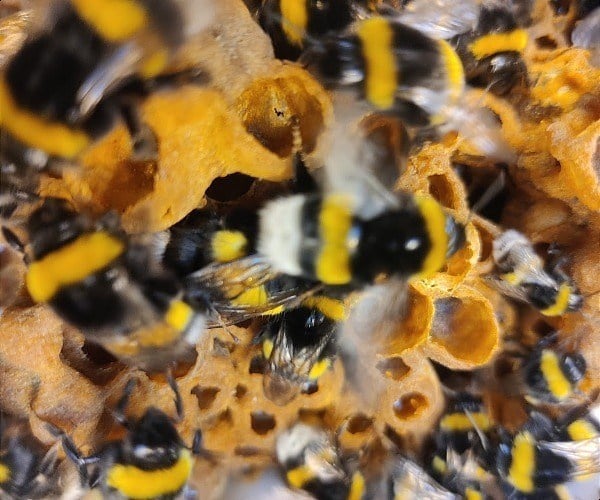
The whole operation is aided by some incredible technology, too. Control computers in each greenhouse control the heat, humidity, carbon dioxide and lighting. Control computers are also linked with fertiliser blenders that water the plants according to a pre-determined schedule. Weather stations on the rooftops obtain information on wind speed, wind direction, temperature and sunlight. And all these devices are in turn connected to the main computer, which is linked to the internet. This allows the couple who own Friðheimar to go online, wherever they are in the world, and monitor the status, change settings and control watering.
Having learned all about Friðheimar, which was really fascinating, it was time for the main event… lunch!
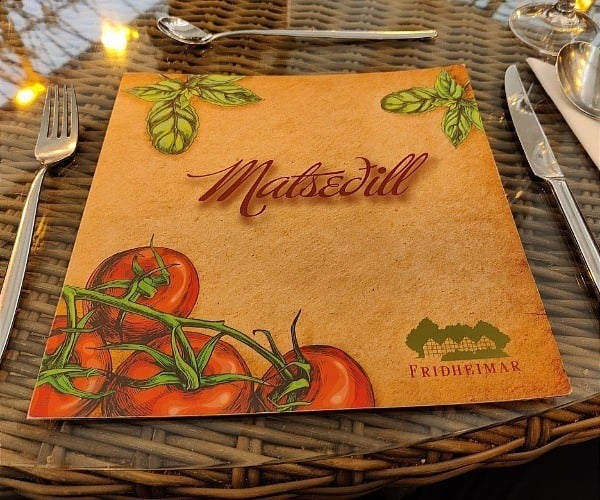
Our waiter was Lorenzo and, as you will have already gathered from the title, everything that is served at Friðheimar uses tomatoes in tne ingredients. And that includes the drinks!
As well as the obvious Bloody Mary tomato drink, you can choose from drinks such as
Healthy Mary (a refreshing drink made from green tomatoes, lime, honey and ginger, served chilled with sparkling water), Mary Poppins Baby (cucumber, mint and lime sorbet, filled up with sparkling water) and even Friðheimar’s very own tomato beer on draught, brewed from red or green tomatoes.
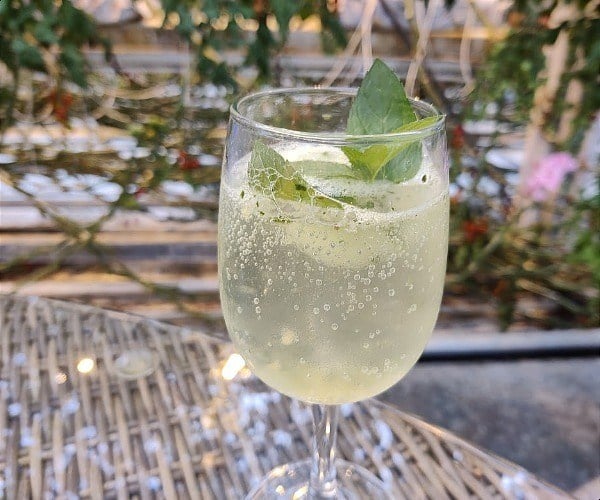
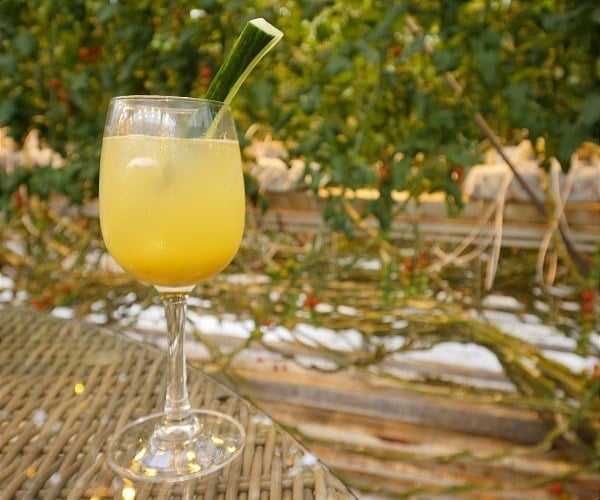
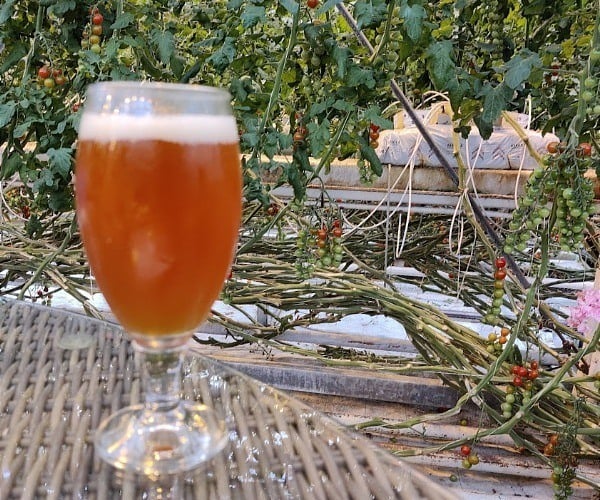
Friðheimar’s signature course is their tomato soup. It is served on a buffet with home-baked bread, sour cream and cucumber salsa. Diners choosing this option can help themselves to as much soup and bread as they please.
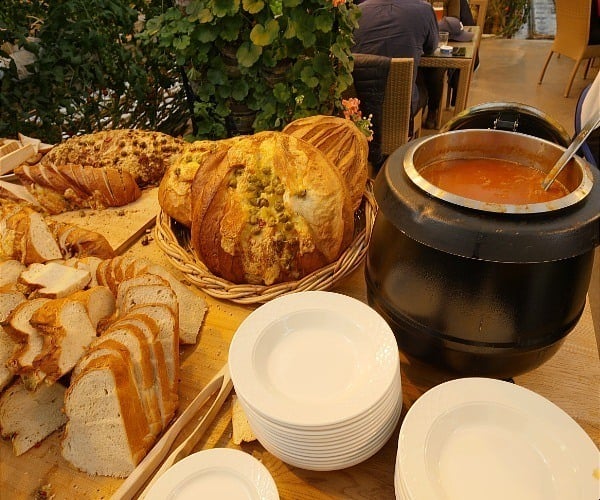
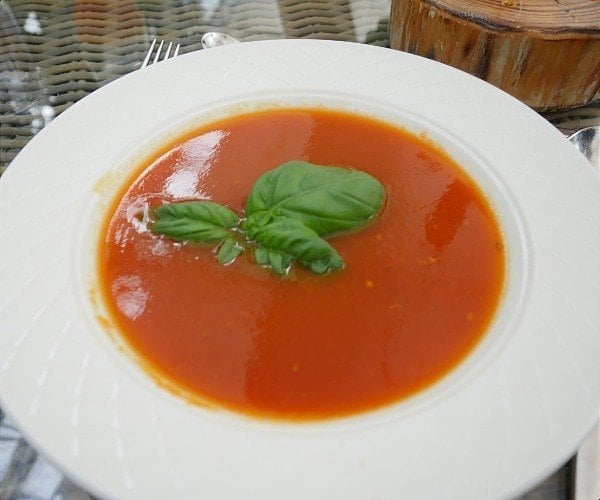
But there also other tomato-based dishes to choose from such as the fresh mussels from Breiðafjörður – a large, shallow bay in the west of Iceland – cooked in Friðheimar’s special tomato seafood sauce.
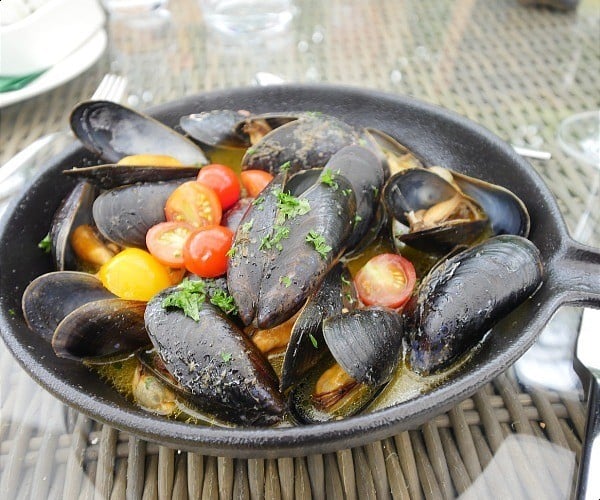
And particularly tasty is their ravioli with homemade pasta sauce and pesto.
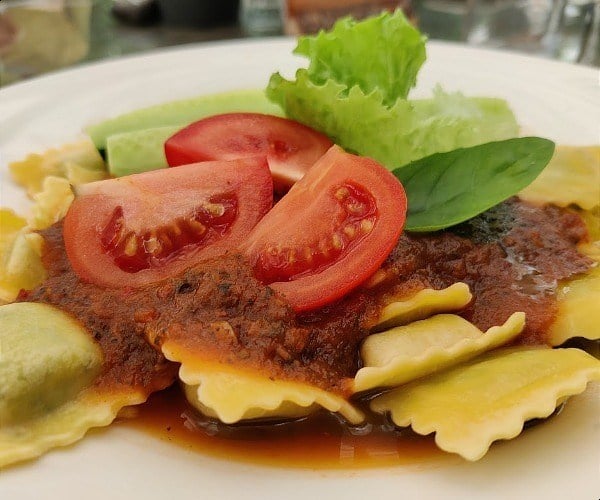
Included with all main courses is homemade bread from the buffet.
And then there are the desserts… again, all made using tomatoes, of course, that include this delicious cheesecake topped with tomato jam made from green tomatoes, cinnamon and lime.
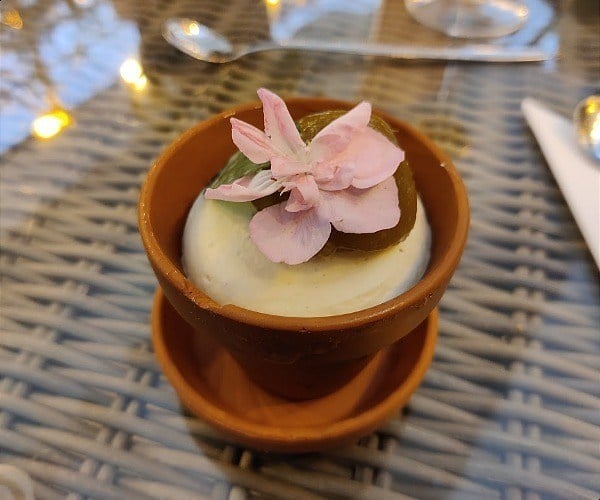
Alternatively, there’s the green tomato, apple and cinnamon pie served with whipped cream.
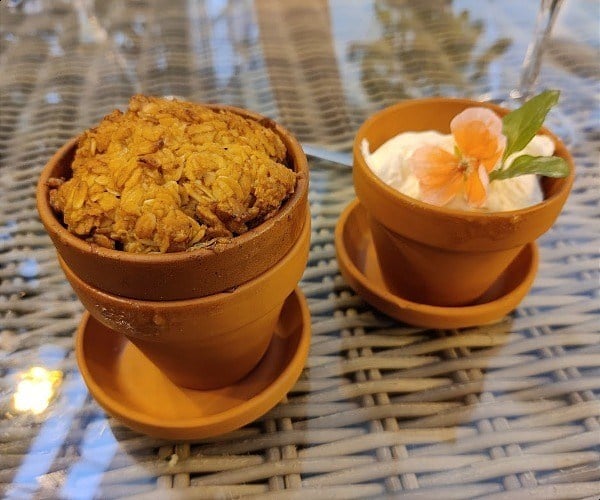
Whatever you choose, you are sure to be delighted. This is a dining experience like no other!
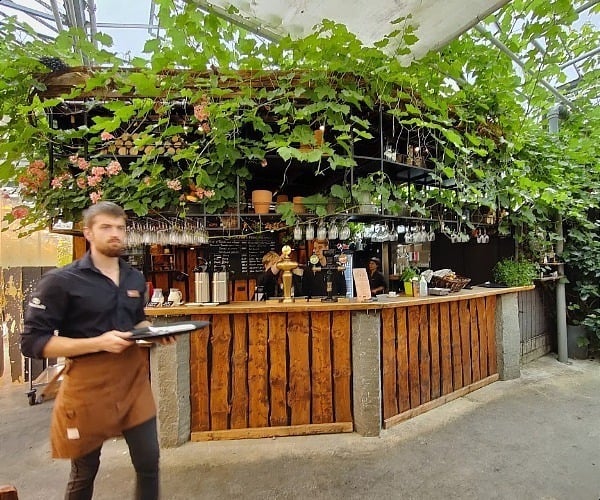
We loved our time at Friðheimar – it was a fun and memorable adventure that we would thoroughly recommend you add to your itinerary… just be sure to book in advance as it can be very popular, particularly during the main season.
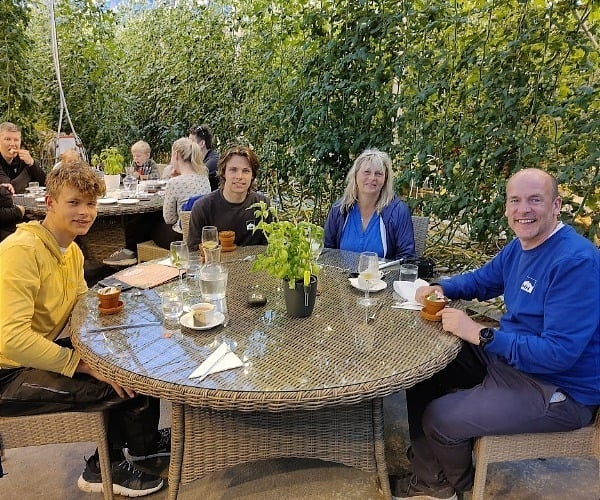
And before you leave, don’t forget to visit the little tomato shop where you’ll find a variety of food produce that you can take with you as a souvenir of your visit.
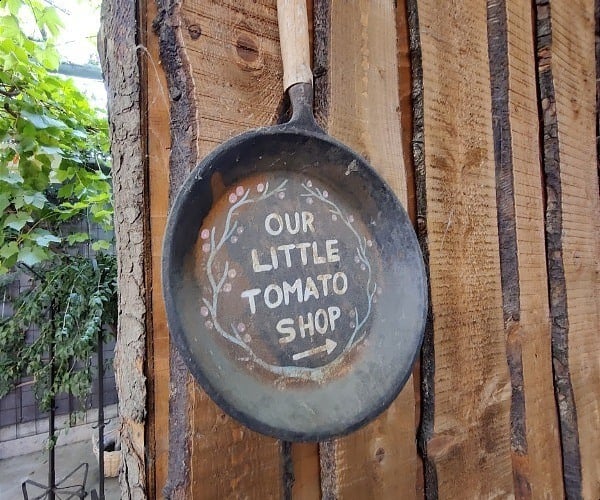
Master Chef Jón K. B. Sigfússon has developed and designed all the food products for the shop and the restaurant. He has many years of experience from around the world, and has cooked for many heads of state.
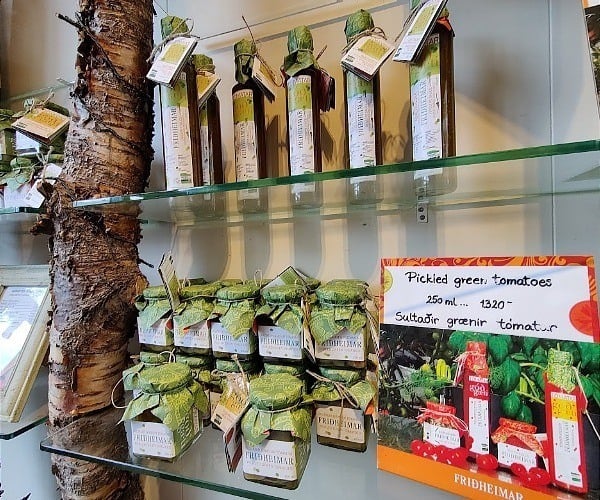
Planning a trip to Iceland yourself? You can watch a video from our trip to Iceland here. Footage from Friðheimar can be seen from 3m 30s – 3m 38s.

Disclosure: This post is sponsored by Friðheimar. Our trip to Iceland was also sponsored by Helly Hansen.
Did you enjoy this article?
Receive similar content direct to your inbox.


Some people, not me, may suggest that the male bees are not too different to other species. I know people who would argue that in flying around and enjoying themselves and leaving all the work to the females the male bees are very similar to human males. In their defence you could say that for a bee life is definitely short.
There were one or two comparisons (and chuckles) about how much bees have in common with humans when we touched on this subject!
I like tomatoes a lot. I like beer a lot. But I think I’d draw the line at tomato beer!
You can’t be sure until you’ve tried it, Fred! It was actually rather good.
What I found interesting was that the green tomato beer was actually quite dark in colour, and the red one was quite light. For some reason, I’d anticipated it would be the other way around…
It’s called a red eye! I am from the state of West Virginia in the USA close to 60 years old and they have been drinking it there all my life! There is nothing strange about it! Beer is made with yeast,bread and tomatoes go together! When in Rome! Now the ice cream that’s very different…..
Never would anyone have thought that Iceland could be such a prolific grower of tomatoes.
It goes to show how ingenious we can be in using technology to harness natural resources.
There may be hope for the future of mankind and the planet yet.
Hi Kenny – if we can continue to use natural resources that are available to us in a sustainable way, I see no reason why not.
I can’t help thinking of what else they could diversify into. Courgettes? Cucumbers? Lettuces? I can’t see them working as beers too well.
I believe they do grow other things like lettuce, cucumbers, basil, etc. but for some reason, tomatoes are the main product. And yes, I can’t imagine a lettuce beer!!! 🤢
What an amazing avalanche of stats! From water temperature through to the rate that the plants grow at.
The stat that surprises me is that a plant lives for around 9 months. My neighbour began with seeds in April and by September the plants were passed their best. That’s only 6 months.
Hi Jen – I suppose what’s different at Friðheimar is that the absolute optimum conditions are being created. Maybe that extends the life a little longer.
Wow… I would have had no idea that Iceland has a restaurant like this!!